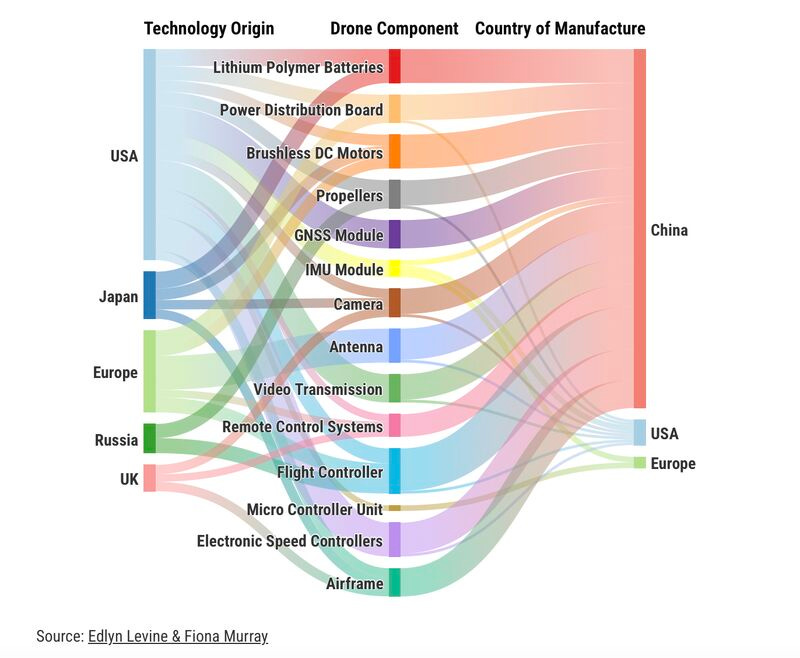This time, I would like to recommend an insightful opinion piece by Edlyn V. Levine and Fiona Murray, which recently appeared in the MIT Technology Review (see here: How the US and its allies can rebuild economic security).
In the article, they illustrate a common issue in Deep Tech, particularly in Europe, by highlighting the impact of “the missing middle” in technology investment, describing the insufficient funding for deploying emerging technology at scale towards commercial production.
They do this through the example of a common First-Person Viewer (FPV) drone, demonstrating how many components are produced in China, despite the technology having largely originated in the Western world. Given that these drones are a crucial tool for the Ukrainian army in its defense efforts, this issue takes on an added significance.
To support their case, they have created an impressive bill of materials for a standard FPV drone, breaking down the components to show where the technology originated (the foundational technology) and where the production takes place (indicating the location of the supplier’s manufacturing operation).

The example of the First-Person Viewer (FPV) drone is just one of many, and the far-reaching consequences for technological sovereignty and economic security are clear.
What is needed? When we talk about Deep Tech, it’s clear that we will require even more patient capital and the rewarding of patient investments in projects that may take a decade or longer. This is especially true during the phases where it is essential to support high-capital-intensive ideas after the proof-of-concept stage, particularly at Technology Readiness Levels 4, 5, 6, and beyond. This is essential to scale manufacturing, engage in learning by doing, and mature emerging technologies that will help build a next-generation industrial base—guaranteeing technological sovereignty and (economic) security.



